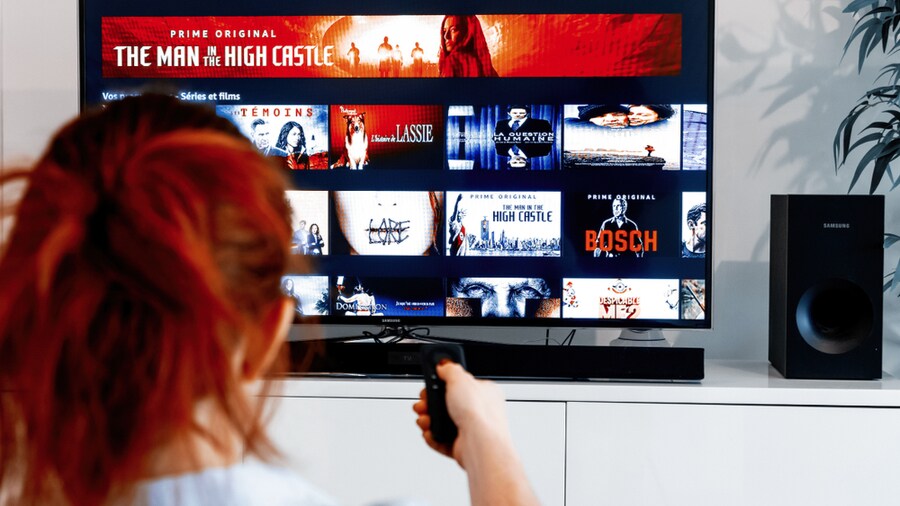Amazon’s newly unveiled mega-slate of 40 originals and a movie rental service, made some major headlines this week and with good reason. The Amazon Prime Video presents India showcase, hosted by Karan Johar in Mumbai last week, revealed plans for 22 scripted and four unscripted series, nine returning series and four films, along with co-productions, multi-year licensing agreements with major producers. It was reported earlier this year that Disney+ Hotstar has 46 million paying subscribers in India, Amazon Prime Video has 22.2 million and Netflix has 6.1 million.
“There are three aspects of going deep — there is content, there is how we market it and there is distribution,” said Gaurav Gandhi, country head, Amazon Prime Video India, at the launch press conference.
Industry experts predict that Amazon’s latest inroads with its slew of originally produced local content can help it break through the OTT clutter. Here are four key things that are helping Amazon Prime Video in the streaming wars.
Its pay-per-view strategy
The newly launched Prime Video Store is a bold move on Amazon’s part. The transaction-video-on-demand (TVoD) service lets subscribers and non-subscribers rent movies. At the moment the Indian OTT platforms that offer something like this are BookMyShow Stream and ZEE5 which has a TVOD service called ZEEPLEX.
For one-time access to a movie on Prime Video Store, prices can range from Rs 69 to Rs 499. The film will be available for 30 days but must be viewed within a 48-hour window. The pay-per-view system works more efficiently than a trial period, to lure in non-subscribers and offers a more targeted approach.
Gandhi revealed during the showcase that Prime Video India enjoys viewership from 99 per cent of the country’s pin-codes. This means the pay-per-view option could be a gamechanger for the platform, especially when it comes to pulling in viewers from tier 2 and tier 3 cities, who are keen on exploring regional cinema or new releases but don’t necessarily want to pay for other aspects of the streaming experience.
Its local content could help it compete with regional OTTs
In India, as of now, there are roughly 35-40 OTT platforms that offer paid subscriptions including regional ones like Hoichoi (Bengali), OHO Gujarati or even Aha (Telugu). Amazon Prime has been committed to developing standout small-town stories and local-language content which has been quite key to its growth. “Some of the best filmmakers will tell you that the more local you go, the more universal you will get,” said Paatal Lok writer Hardik Mehta in an interview recently.
Shows like Mirzapur and Panchayat and original films like Joji, and Chhalaang were able to offer story-telling from the hinterland. This commitment also shows up in their future co-productions and partnerships and could help Amazon Prime stand its ground against regional OTT platforms.
It expanded the base for Indian talent and homegrown content
Indian content is gaining momentum across the world and Amazon recognised it early enough to grow its global subscriber base. James Farrell, head of local originals at Amazon Studios said, “One in 5 of our customers watches Indian content outside India. A title like Shershaah, for instance, I watched that in the US and so did a lot of people I know. One Mic Stand is a great comedy show that was made here and someone from our German team watched it and thought, ‘you know what, it could work for Germany.’ So they made it there. It’s a super interesting time for how content is starting to move around the world.”
Head of Amazon Studios, Jennifer Salke revealed that Amazon has worked towards being home for local talents. “Being ‘the home for talent’ means having the best teams on the ground and to be able to cultivate that talent in the regions,” said Salke.
The tech giant also has a better approach towards Bollywood content than its rivals. Amazon Prime has simply done a better job at utilising star power instead of being swayed by it. Its newest slew of releases feature names like Shilpa Shetty, Sonakshi Sinha, Abhishek Bachchan, Juhi Chawla, and Vivek Oberoi who clearly enjoy a fan base in the country and yet had limited space to flex their talent.
The same goes for emerging names. Almost 70 per cent of the new titles across Hindi, Tamil and Telugu that will roll out over the next two years, feature new talent. “This is about making sure we’re thinking about customers, who are incredibly diverse across India. How do we reach the talent that speaks to that diverse audience?” confirmed Salke.
Better clarity in pricing and content investment
Amazon has been able to hike its prices as it continues to expand its catalogue and thus simply offers more choices to subscribers. At the end of last year, Netflix slashed its prices across its subscription plans in a bid to expand its user base.
Amazon had a more focused pricing approach from the get-go, targeted at retaining subscribers. The streamer was able to hike up its prices in India since it could deliver on its promised growth. Since Amazon Prime offers more than just video content and is basically a bundled service (with Prime delivery and music service), it has an edge over its competitors. Moreover, Amazon’s MGM acquisition has earned it money-makers like the James Bond films and classics like Raging Bull and Rocky.
“We have steadily innovated in the way we offer movies to our consumers, from offering films in a post-theatrical early window to direct-to-service premieres bringing the most anticipated movies to consumers’ living rooms and preferred devices. We are deeply committed to growing this segment further and are going bigger on our film licensing partnerships, expanding our co-production initiatives and are now announcing our foray into original movies,” said Gandhi.
